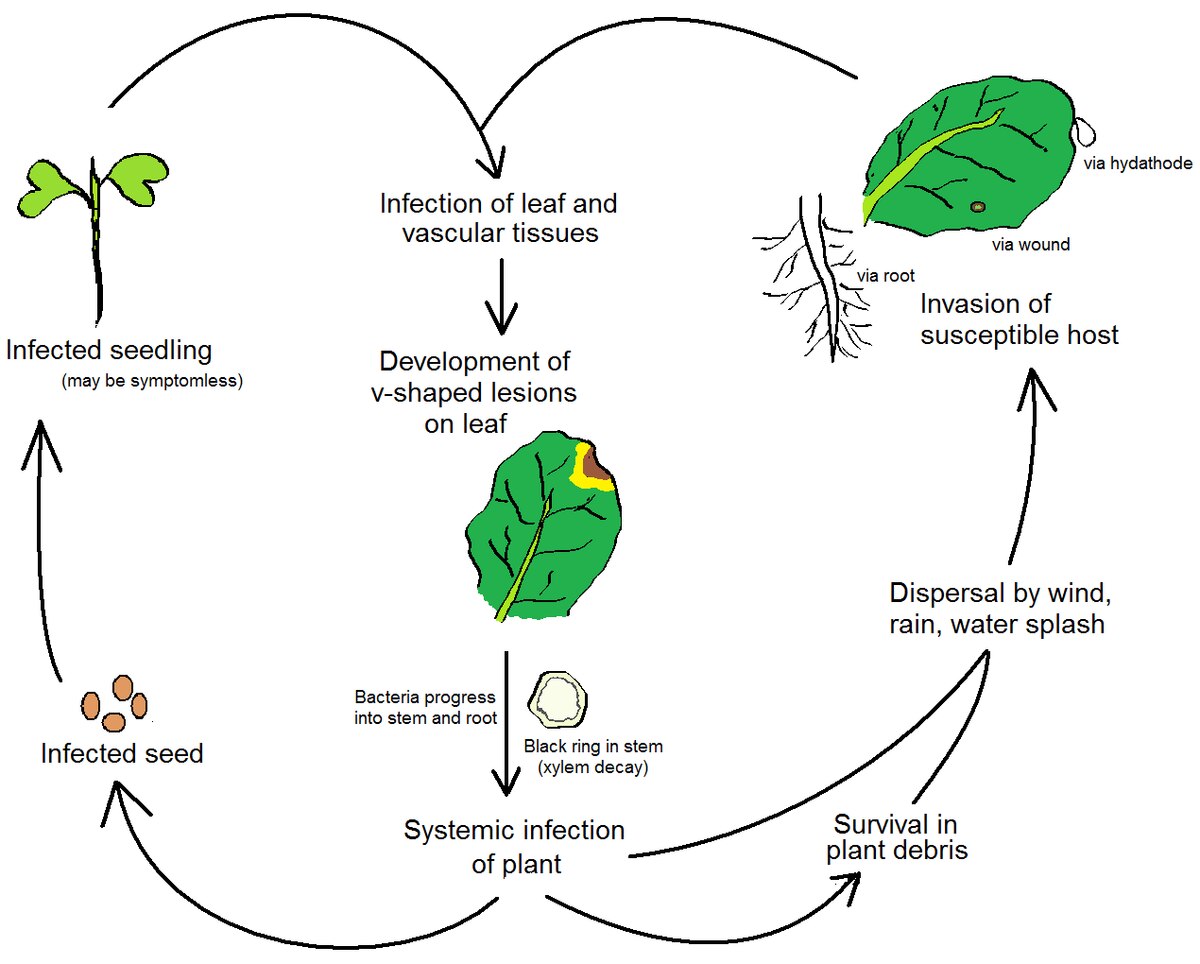Unveiling the Lifecycle: A Comprehensive Exploration of the Development of Plant Diseases
Infection and Entry:
- Pathogen
Entry Mechanisms:
- Natural
Openings: Stomata, lenticels, and hydathodes serve as gateways for
pathogens, allowing them to penetrate the plant's surface.
- Wounds:
Injuries inflicted by pruning, mechanical damage, or pests create
vulnerable entry points.
- Vector-Mediated
Entry: Some pathogens leverage insects or other organisms as
vectors, aiding in transmission.
- Adhesion
and Penetration Strategies:
- Surface
Adhesion: Pathogens employ adhesion proteins for secure attachment
to the plant surface.
- Enzymatic
Breakdown: Enzymes secreted by pathogens degrade plant cell walls,
facilitating penetration.
- Appressoria
and Specialized Structures: Certain fungi develop appressoria or
specialized structures for breaching plant tissues.
Colonization and Multiplication:
- Pathogen
Proliferation Tactics:
- Utilization
of Plant Resources: Pathogens multiply within plant tissues,
exploiting available resources.
- Hyphal
Extension: Fungal pathogens extend hyphae, causing physical damage
and extracting nutrients.
- Rapid
Bacterial Reproduction: Bacterial pathogens reproduce swiftly,
spreading within the plant.
- Localized
and Systemic Infections:
- Confined
Infections: Some pathogens remain localized, causing damage to
specific plant parts.
- Vascular
Spread: Others move systemically through the plant's vascular
system, impacting distant areas.
Symptom Expression:
- Incubation
Period Complexity:
- Latent
Phases: Pathogens may remain dormant, hiding within the plant before
visible symptoms manifest.
- Influencing
Factors: Incubation periods vary based on host resistance,
environmental conditions, and pathogen characteristics.
- Diverse
Visible Symptoms:
- Lesions
and Spots: Distinct discolorations, lesions, or spots emerge on
leaves, stems, or fruits.
- Wilting
and Stunting: Loss of turgor pressure and reduced growth are common
symptoms.
- Deformities:
Viral infections frequently lead to distorted leaves, flowers, and
fruits.
Spread and Transmission:
- Modes
of Dissemination:
- Wind
and Rain Dissemination: Airborne pathogens may spread through wind
or rain splash.
- Insect
Vectors: Insects and other vectors play a significant role in
transmitting diseases.
- Soil-Borne
Transmission: Pathogens persist in soil, infecting new plants
through root contact.
- Secondary
Infections and Disease Cycle Continuation:
- Weakened
Plant Defenses: Primary infections compromise plant defenses,
leaving them vulnerable to secondary pathogens.
- Cyclic
Nature: The disease cycle perpetuates through the reproduction and
spread of pathogens, sustaining the infection cycle.
Disease Cycle and Reproduction:
- Pathogen
Life Stages and Strategies:
- Asexual
Reproduction: Pathogens commonly reproduce asexually, producing
spores or other propagative structures.
- Sexual
Reproduction Dynamics: Some fungi and bacteria engage in sexual
reproduction, contributing to genetic diversity.
- Survival
Structures and Reservoirs:
- Overwintering
Structures: Pathogens form structures ensuring survival during
adverse conditions.
- Reservoirs of Infection: Infected plant debris, alternative hosts, or contaminated tools act as reservoirs, sustaining the disease cycle.
The development of plant diseases unfolds as a captivating
narrative of host-pathogen interactions and environmental influences. This
comprehensive exploration provides a profound understanding of the intricacies
involved in disease development, empowering growers to devise targeted and
sustainable strategies for disease management. As research in plant pathology
advances, this knowledge serves as a cornerstone for fostering resilient
agricultural ecosystems and ensuring global food security.
Frequently Asked Questions (FAQs) about the Development of Plant Diseases
1. Q: How
do plant diseases initially infect plants?
A:
Plant diseases often enter through natural openings like stomata, wounds caused
by pruning or pests, or with the assistance of vectors like insects.
2. Q: What
are appressoria, and how do they contribute to disease development in plants?
A:
Appressoria are specialized structures formed by certain fungi to breach plant
tissues. They aid in the penetration phase of the disease development process.
3. Q: How
do pathogens spread within plants, causing damage and extracting nutrients?
A:
Fungal pathogens extend hyphae through plant tissues, physically damaging them
and extracting nutrients to support their growth and reproduction.
4. Q: What
factors influence the incubation period of plant diseases?
A:
The incubation period varies based on factors such as host resistance,
environmental conditions, and characteristics of the pathogen.
5. Q: What
are the visible symptoms of plant diseases, and how do they manifest?
A:
Visible symptoms include discolorations, lesions, spots, wilting, stunting, and
deformities in leaves, stems, or fruits, depending on the type of disease.
6. Q: How
do pathogens spread from plant to plant, and what are the modes of
dissemination?
A:
Pathogens spread through various modes, including wind and rain, insect
vectors, and soil-borne transmission through root contact.
7. Q: What
is the significance of secondary infections in the disease development cycle?
A:
Primary infections often weaken plant defenses, making them susceptible to
secondary pathogens, contributing to the perpetuation of the disease cycle.
8. Q: How
do pathogens reproduce, and what are the life stages involved in the disease
cycle?
A:
Pathogens reproduce through asexual means, producing spores or propagative
structures. Some also engage in sexual reproduction, contributing to genetic
diversity.
9. Q: What
are overwintering structures, and how do they impact the survival of pathogens?
A:
Overwintering structures help pathogens survive adverse conditions, ensuring
their persistence and contributing to the re-emergence of diseases in the
following seasons.
10. Q:
What serves as reservoirs for plant diseases, sustaining the disease cycle?
A:
Infected plant debris, alternative hosts, and contaminated tools act as
reservoirs, contributing to the sustainability of the disease cycle.
11. Q:
How can growers interrupt the disease cycle and prevent the spread of plant
diseases?
A:
Implementing practices such as crop rotation, proper sanitation, and adhering
to biosecurity measures can help interrupt the disease cycle and prevent
further spread.
12. Q:
How does research in plant pathology contribute to the understanding of disease
development?
A:
Ongoing research in plant pathology contributes to a deeper understanding of
host-pathogen interactions, environmental influences, and the development of
innovative disease management strategies.





.jpg)
0 Comments